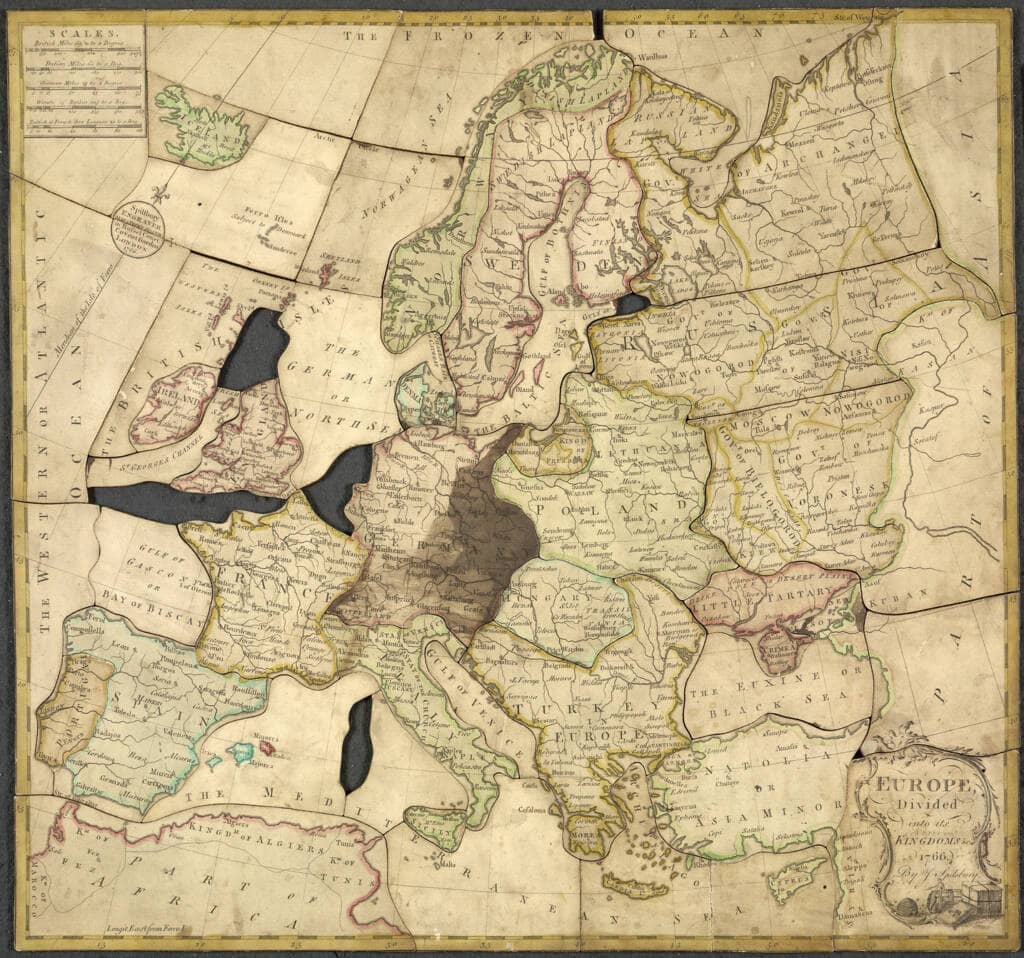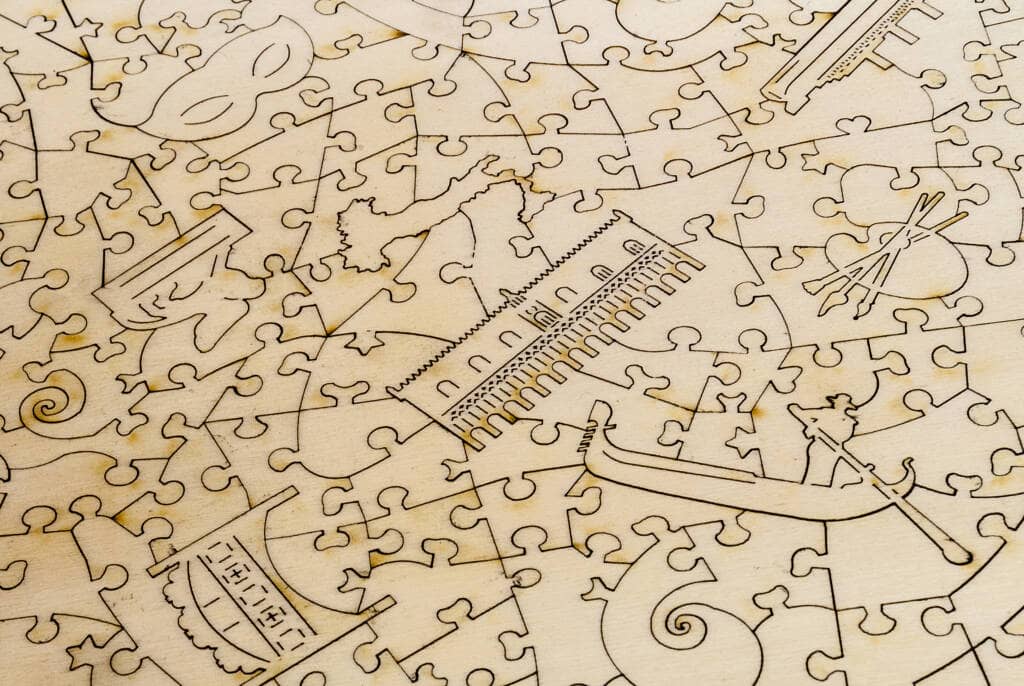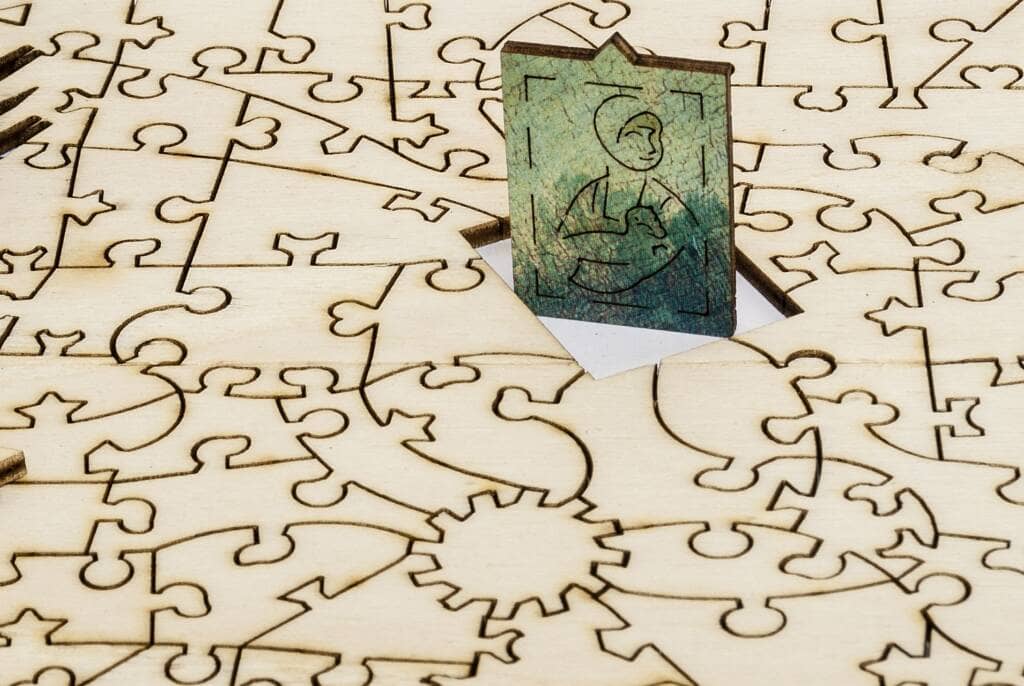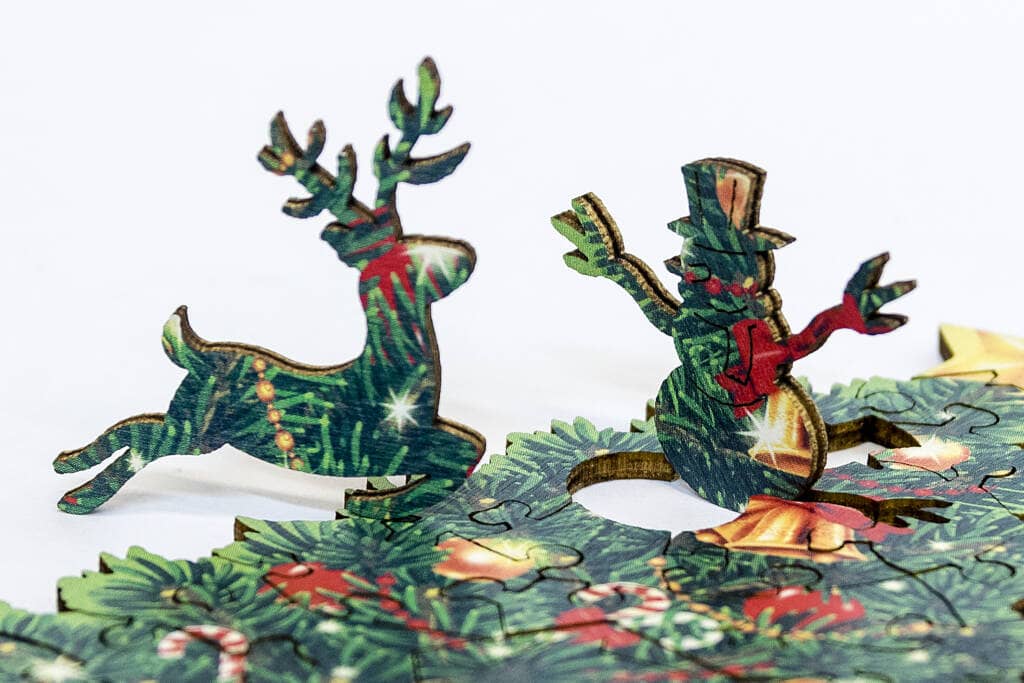Wooden puzzles: a fascinating story
The beginning: the didactic puzzles
Today we are used to seeing puzzles as a fun pastime with cardboard tiles, but originally they were very different and were made of wood.
Probably created in the early 1700s, they were first marketed in 1766 by a London cartographer, John Spilsbury.
Spilsbury pasted a geographical map of Europe onto a wooden board and then cut out the board along the borders of the states. Thus he created a 50-piece puzzle, which is now kept in the British Library in London.

J. Spilsbury, Europe divided between its kingdoms, London 1766. British Library, London.
The first commercial puzzle.
These “Dissected Maps”, as they were called at the time, had a didactic purpose and were also used to educate the future King George III.
Puzzles evolve
These puzzles, all made of wood, saw some technological innovation only in the second half of the 19th century with the introduction of the fretwork. This instrument allowed ever smaller and more refined shapes.
Around 1890 the production of cardboard puzzles began, but without success because of very poor quality.


In the following decades, the paper industry made great progress and the cardboard gained in quality. With the great crisis of 1929 the cardboard puzzles became more popular. In fact, even if of even lower quality than those in wood, they quickly established themselves thanks to the lower cost.
Puzzles nowadays: the challenge of quality

Cardboard puzzles are the best-selling and most widely distributed today. But some small companies around the world continue to make valuable wooden puzzles.
A wooden puzzle still needs a handcrafted attention to detail and the tiles are checked one by one.
Modern wooden puzzle manufacturing processes involve powerful color transfer presses. The heat and high pressure indelibly fix the color on the surface of the wood.
The wooden boards are then cut with a laser beam at over 1,200 degrees centigrade. The cut is precise and of very small thickness for a perfect fit.
WoodART Puzzle by FORMAcultura
With these technologies, laser cutting and heat presses, FORMAcultura has produced WoodART Puzzle. A series of puzzles in poplar wood that hark back to a centuries-old tradition, but with cutting-edge technology.
Each puzzle is unique, with all different tiles. In addition, the special tiles have shapes that refer to the history of the reproduced work of art or to the life of the artist.

All the design and production is “Made in Italy” in our laboratories in Pisa. The artisan side of production lies in the design of the cutting path, in the preparation of each single puzzle and in the subsequent check of the tiles. Even the packaging, in linen bags, is handcrafted, as is the care of every single shipment.
Discover all the subjects in our shop!


